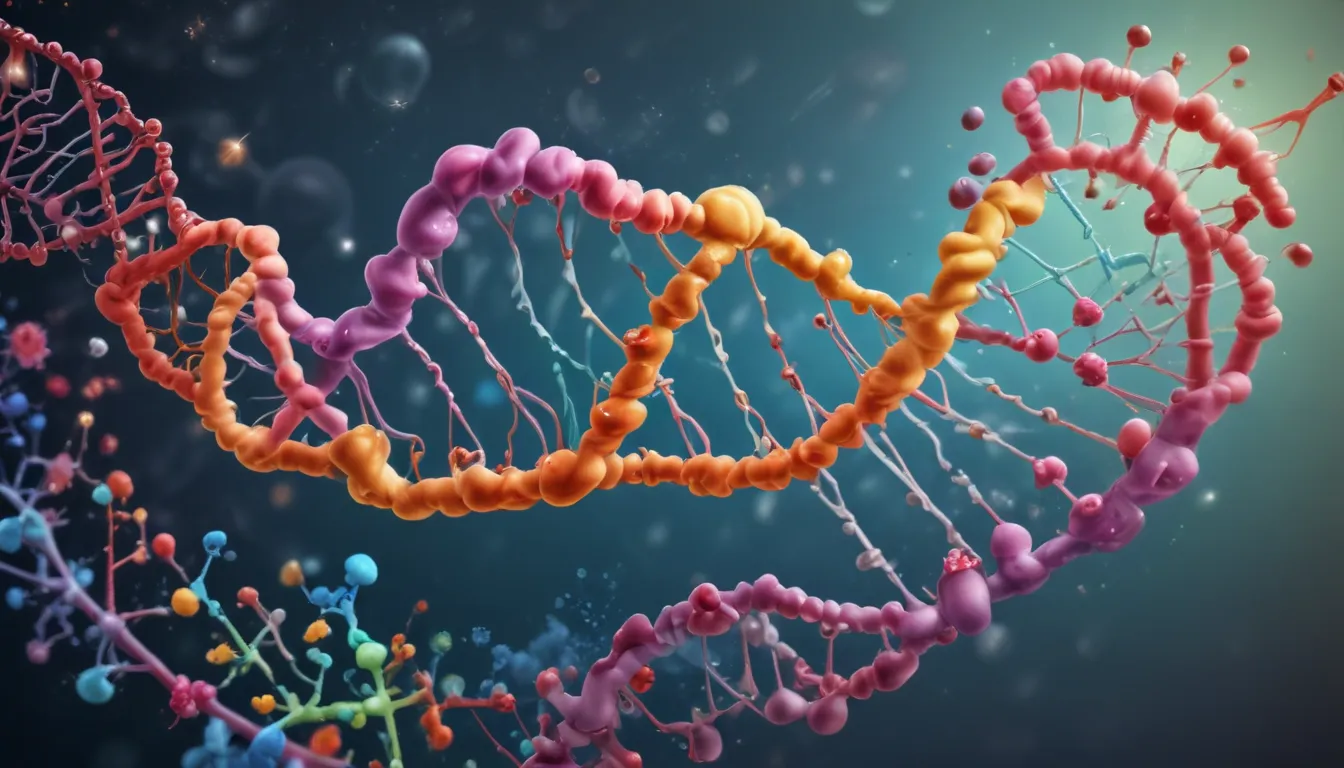A Note About Images: The images used in our articles are for illustration purposes only and may not exactly match the content. They are meant to engage readers, but the text should be relied upon for accurate information.
Are you curious about the tiny molecules that play a significant role in shaping the world of molecular biology? RNA nucleotides, represented by the letters A, U, C, and G, are the unsung heroes behind various biological processes. While DNA takes the spotlight as the famous double-helix molecule, RNA quietly but powerfully influences protein synthesis, gene regulation, and cell signaling.
In this engaging guide, we will embark on a journey to unravel the mysteries surrounding RNA nucleotides. We will explore 12 intriguing facts that shed light on their unique properties, functions, and importance in the intricate web of genetic information. By the end of this article, you will have gained valuable insights into the world of RNA nucleotides and how they contribute to the fundamental workings of life itself.
Decoding the Building Blocks: RNA Nucleotides at a Glance
RNA nucleotides, namely Adenine (A), Uracil (U), Cytosine (C), and Guanine (G), are the essential components that make up RNA molecules. Just as bricks form the foundation of a building, these nucleotides encode and transmit genetic information vital for various cellular processes.
One fascinating fact about RNA nucleotides is the unique pairing of Adenine with Uracil (A-U) instead of Thymine as in DNA. This distinct feature contributes to the versatility of RNA and its crucial role in biological processes. Additionally, RNA nucleotides exhibit specific complementary base pairing, where A always pairs with U, and C always pairs with G, ensuring the stability and functionality of RNA molecules.
Unveiling the Secrets of RNA:
RNA, the Messenger: Connecting DNA and Protein Synthesis
RNA plays a pivotal role as a messenger molecule between DNA and protein synthesis. Messenger RNA (mRNA) carries genetic instructions from DNA to the ribosomes, where protein synthesis occurs. This essential function ensures the accurate translation of genetic information into proteins, the building blocks of life.
Catalytic Activity: The Power of Ribozymes
Some RNA molecules, known as ribozymes, exhibit catalytic activity, acting as enzymes that facilitate chemical reactions. This groundbreaking discovery revolutionized our understanding of RNA’s active role in cellular processes and its significance beyond mere genetic information transmission.
RNA Editing: Altering the Script
RNA molecules can undergo post-transcriptional modifications, including RNA editing. This process involves changing specific nucleotides within the RNA molecule, leading to alterations in genetic information and enhancing protein diversity. Such intricate modifications underscore the dynamic nature of RNA’s involvement in cellular functions.
Unraveling the Complexity: RNA Structures and Diversity
RNA nucleotides have the remarkable ability to fold into intricate secondary structures, such as hairpins, loops, and stems. These structures play crucial roles in regulating gene expression, RNA stability, and interactions with other molecules. Moreover, not all RNA molecules serve as templates for protein synthesis. Non-coding RNAs (ncRNAs) are functional RNA molecules that play diverse roles in gene regulation, chromatin remodeling, and cellular processes, highlighting the vast functional diversity of RNA nucleotides.
Delving Deeper: Implications and Applications
Genetic Mutations: Unraveling the Mysteries
Alterations or mutations in RNA nucleotides can have profound impacts on genetic information and protein functionality. Understanding these mutations is paramount for studying genetic disorders and designing targeted therapeutic interventions that address the underlying molecular changes.
RNA Interference: Silencing Genes, Unlocking Potential
RNA interference (RNAi) is a natural cellular process where specific RNA molecules regulate gene expression by silencing or inhibiting the translation of target genes. This mechanism holds immense potential for therapeutic applications, offering new avenues for treating genetic diseases and manipulating gene expression.
Functional Diversity: The Multifaceted Roles of RNA
From messenger RNA to transfer RNA, ribosomal RNA, and regulatory ncRNAs, RNA nucleotides contribute to the vast functional diversity of RNA molecules within cells. Each class of RNA performs distinct functions critical for various cellular processes, showcasing the intricate interplay of genetic information flow.
Exploring Evolutionary Significance and Beyond
The understanding of RNA nucleotides and their roles in genetic information has provided valuable insights into the evolutionary origins of life on Earth. RNA served as a crucial player in the emergence of the first self-replicating molecules, paving the way for the evolution of DNA and the complexities of life as we know it.
The world of RNA nucleotides is a captivating realm filled with surprises and revelations. By unraveling the properties and functions of Adenine, Uracil, Cytosine, and Guanine, we gain a deeper understanding of genetic information’s complexities and its profound impact on biological processes.
Conclusion: Unlocking the Secrets of RNA Nucleotides
In conclusion, RNA nucleotides (A, U, C, G) are the unsung heroes of molecular biology, playing crucial roles in genetic information encoding, protein synthesis, and cellular regulation. By delving into the intricacies of these tiny molecules, we uncover a world of possibilities and advancements in the field of biology.
As we continue to explore the fascinating world of RNA nucleotides, we unearth new discoveries, deepen our understanding of life’s fundamental processes, and pave the way for innovative applications in medicine and biotechnology. Let us appreciate the remarkable role these minuscule molecules play in shaping the intricate tapestry of biological existence.
FAQs: Unveiling the Essentials of RNA Nucleotides
- What are RNA nucleotides, and how do they differ from DNA nucleotides?
RNA nucleotides are the building blocks of RNA molecules, consisting of a sugar molecule (ribose), a phosphate group, and one of four nitrogenous bases: Adenine (A), Uracil (U), Cytosine (C), or Guanine (G). The key difference from DNA nucleotides lies in the presence of ribose sugar in RNA and the use of Uracil (U) instead of Thymine (T) as one of its nitrogenous bases.
- What role do RNA nucleotides play in protein synthesis?
RNA nucleotides serve as templates for protein synthesis through a process called translation. They contain genetic information transcribed from DNA that is translated into amino acids, essential for protein formation.
- How do RNA nucleotides form base pairs, and what is their significance?
RNA nucleotides form base pairs through specific complementary pairing mechanisms: Adenine (A) pairs with Uracil (U), and Cytosine (C) pairs with Guanine (G). These base pairs are crucial for maintaining the structure, stability, and functionality of RNA molecules.
- Are there non-canonical RNA nucleotides, and how do they contribute to RNA diversity?
Yes, non-canonical RNA nucleotides exist, differing from the standard bases (A, U, C, G). Examples include modified bases like pseudouridine and methylated nucleotides, influencing RNA structure and function, enhancing its diversity and functional capacity.
Embark on a journey of discovery into the captivating world of RNA nucleotides, where each fact and revelation sheds light on the intricate workings of genetic information and cellular processes. Join us as we unravel the secrets locked within these tiny molecules, opening doors to limitless possibilities and groundbreaking advancements in the realm of molecular biology.






